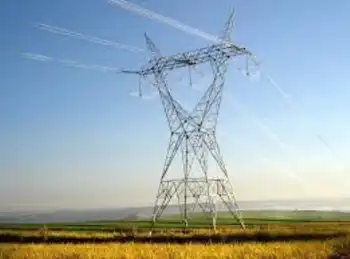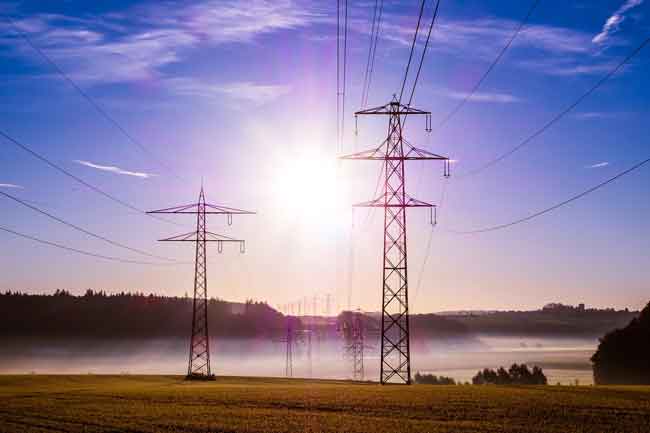Energy Secretary urges lighting upgrades
By Electricity Forum
Protective Relay Training - Basic
Our customized live online or in‑person group training can be delivered to your staff at your location.

- Live Online
- 12 hours Instructor-led
- Group Training Available
Citing a letter issued by Secretary of Energy Samuel W. Bodman, National Lighting Bureau Chair Robert W. Colgan, Jr. noted that “the return on investment that can be generated by upgrading these outmoded systems will never be better. The Commercial Building Tax Deduction [CBTD] introduced through the Energy Policy Act of 2005 has been extended through December 31, 2013. The CBTD gives owners a tax benefit of as much as 60 cents per square foot for qualifying lighting systems, effectively lowering the investment required to update or replace an outmoded system.
“The return – in the form of utility bill savings and the bottom-line benefits of providing better seeing conditions – creates a genuinely huge financial incentive at a time when building owners could really use one.”
In his letter to building-industry leaders, Secretary Bodman wrote, “More than 75 percent of the Nation’s five million commercial, industrial, and institutional buildings were built prior to the introduction of many groundbreaking energy efficient technologies currently available today. These buildings consume nearly 900 billion kilowatt-hours of electricity, at a cost exceeding $115 billion each year. While cost-effective lighting technologies are available now to cut energy costs by up to 50 percent, only 25 percent of the buildings have been upgraded.”
Mr. Colgan said that the upgrade incentives comprise far more than the tax benefits that can significantly offset the capital investment required to improve. “The energy cost savings can be substantial,” he said, noting that, using Department of Energy estimates, lighting upgrades alone could avoid some $50 billion of needless energy expense each year.
“But energy savings are only part of the picture,” he added, commenting that most of the buildings in question also pay “demand charges,” that is, fees imposed by electric utilities based on the maximum amount of electricity the buildings use during a given “demand interval,” often a period of 15 consecutive minutes.
Mr. Colgan explained, “Although two utility customers may consume the identical amount of electricity in a month, the utility will have to invest far more to meet the demands of a customer that uses that amount all in one day versus the customer that consumes about 3.33 percent of the amount each day of the month. Demand charges typically are imposed on nonresidential customers as separate elements of the utility bill, and they can in some cases amount to as much as or even more than energy charges.”
Despite the often-substantial savings afforded by lower utility bills, the most significant value likely to be derived from lighting-system upgrades comes from what the National Lighting Bureau calls High-Benefit Lighting; that is, lighting systems designed specifically for the tasks, workers, and spaces involved. According to Mr. Colgan, “National Lighting Bureau case histories show that, when new or upgraded lighting is well-designed, properly installed, and commissioned to ensure it achieves the design intent, people can perform their tasks faster and with fewer errors.
“Consider this: A two-shift, 100-person-per-shift manufacturer may spend about $15,000 per year on lighting energy when it operates six days per week. If so, a 70% energy-use reduction would yield an energy-cost benefit of $10,500 per year. If that same new lighting were well-designed and so improved worker productivity by just 2% per year, the manufacturer would derive an additional benefit worth about $150,000 per year.”
Productivity improvements are not the only benefits of High-Benefit Lighting, Mr. Colgan said. He commented that additional benefits stem from fewer errors, fewer accidents, reduced absenteeism, improved security, increased retail sales, and, in a number of cases, higher resale value for the property involved.
And still, thatÂ’s not all.
“The nation’s number-one source of greenhouse gas emissions is coal-fired power plants,” Mr. Colgan said. “Reducing electrical requirements reduces the amount of coal burned each year and that can have an extremely positive effect on our environment, and can significantly reduce the costs we’d otherwise have to bear to clean up the pollution involved and counteract the warming effects otherwise created.”
Mr. Colgan commented that the CBTD applies to more than lighting and, for that reason, the National Electrical Manufacturers Association – a founder and long-term sponsor of the National Lighting Bureau – has been working with Secretary Bodman in developing a multifaceted, national energy-conservation effort.
As Secretary Bodman wrote, “I challenged the National Electrical Manufacturers Association (NEMA) to commit to a national building energy efficiency campaign…[and] NEMA has responded with enthusiasm, resources, and dedication….The benefits to be gained from its initiative are described in detail at its website, www.NEMAsaveseneregy.org.”
“There are so many right reasons for upgrading or replacing outmoded lighting systems right now,” Mr. Colgan said. “And the return on one’s investment can be truly spectacular.”
Lighting-system designers available to help achieve High-Benefit Lighting in every state of the union are listed at the National Lighting Bureau website (www.nlb.org).
“We identified these people and are providing their listings at no charge to help jump-start the decision process,” Mr. Colgan said. “We have encouraged every lighting-system designer in the nation to sign up.”
The Bureau’s website also provides guidance on how to select lighting-system designers and lists individuals who are authorized to certify that a given lighting system complies with the CBTD requirements. “Lighting systems must be certified in order to be eligible for the tax deduction,” Mr. Colgan noted.
“Lighting systems can be certified by qualified contractors and engineers as well as lighting-system designers, and the Bureau invites certifying firms and individuals to list free of charge on the NLB website. We want to make it easy for businesses to take advantage of these great incentives.”
The BureauÂ’s website also provides free guidance literature, as well as numerous articles and case histories describing the benefits of High-Benefit Lighting.











